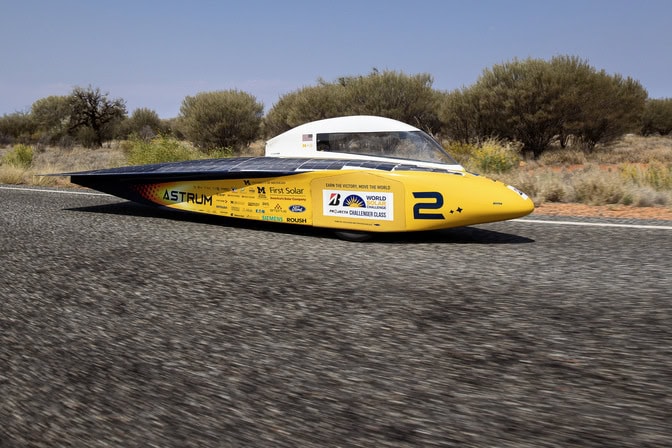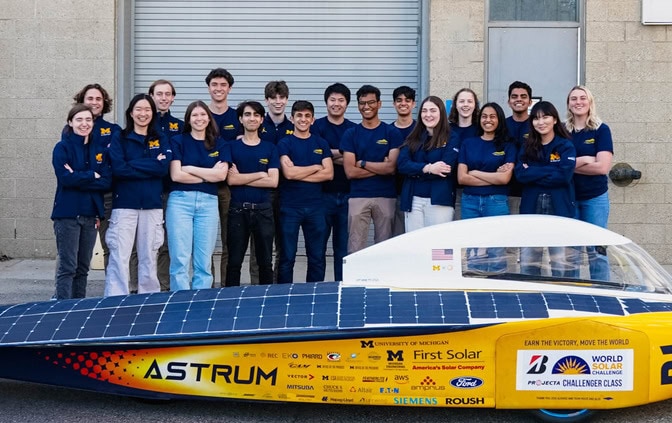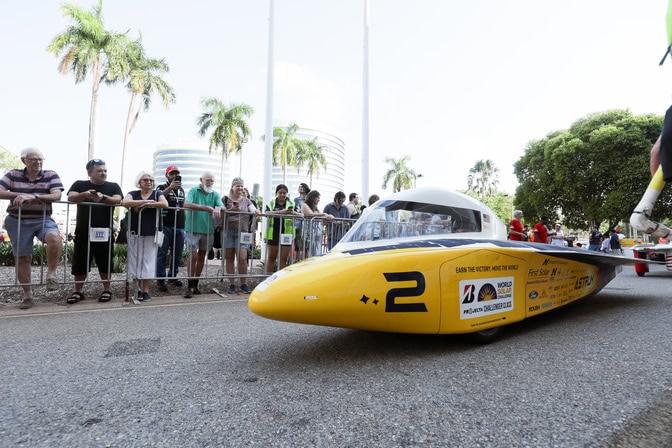
U-M solar car team returns to the American Solar Challenge
For the first time since 2018, the University of Michigan solar car team will stake their claim as one of the nation’s best.

For the first time since 2018, the University of Michigan solar car team will stake their claim as one of the nation’s best.
Sporting a brand new roll cage, the University of Michigan solar car team’s latest vehicle will speed down parts of the Oregon Trail and seven other national historic trails during this year’s American Solar Challenge, July 20-27.
Starting in Nashville, Tennessee, the team will drive more than 1500 miles to the finish in Casper, Wyoming.
This year will be the first time U-M has competed in the race since 2018. The COVID-19 pandemic prevented the team from participating in 2020, and since then, the team optimized their cars for the Bridgestone World Solar Challenge in Australia.
Because the World and American Solar Challenges have different requirements, this meant the car planned for the 2021 World race wasn’t well-suited to the American race in 2022. It was designed for speed across Australia’s scorching outback—not racking up extra miles in more variable weather to meet a key metric of the American race. Each competition also has a distinct set of regulations that limit the size, shape and internal components of the car in unique and sometimes competing ways.
“I think our team historically had challenges getting the car up to code for the American Solar Challenge,” said Daniel Benedict, the team’s project manager and recent U-M computer science graduate.

He said the team believes their troubles adapting to the American race’s regulations was a big reason why they placed second behind Western Sydney, an Australian team, in 2018.
“Those challenges caused a lot of tension between us and the event itself,” Benedict said. “This year, we really reflected on what we value as a team and why we do things. I think we have realized the importance of connecting with other teams and making sure that our members have more opportunities to experience what it’s like to race the car.”
Called Astrum, the latest car was designed to push speed, aerodynamics and efficiency within the regulations allowed by the 2023 World Solar Challenge. Retrofitting it to meet the American Solar Challenge’s requirements was a big hurdle, Benedict said.

One of the most troublesome changes was installing a sturdier roll cage around the driver’s seat, for which Astrum’s narrow body left barely any room. To fit everything together, the team had to iterate through several different solutions, and projects that should have taken a few weeks ballooned into months-long endeavors, said Norah Allington, a sophomore with an undeclared engineering major who will serve as this race’s crew chief.

For this team, the struggle and extra effort was worth the chance to test their mettle against their American colleagues.
“We’ve already had the opportunity to connect with teams from MIT, Illinois, Stanford and Minnesota,” said Aidan Goettsch, the team’s engineering director and a recent computer engineering graduate who will return for a master’s in computer science and engineering this fall.
“It really means a lot to us to be a part of the American solar car racing community, and that definitely is a piece of the team that was missing for a while,” Goettsch said.
Astrum is the 17th car made by the Michigan Solar Car Team since its founding in 1989. The team has won the American Solar Challenge nine times, had podium finishes in the Bridgestone World Solar Challenge seven times, and won its first international championship in 2015 at the Abu Dhabi Solar Challenge. With more than 90 students from schools and colleges across the university, it’s one of the largest student organizations on campus.